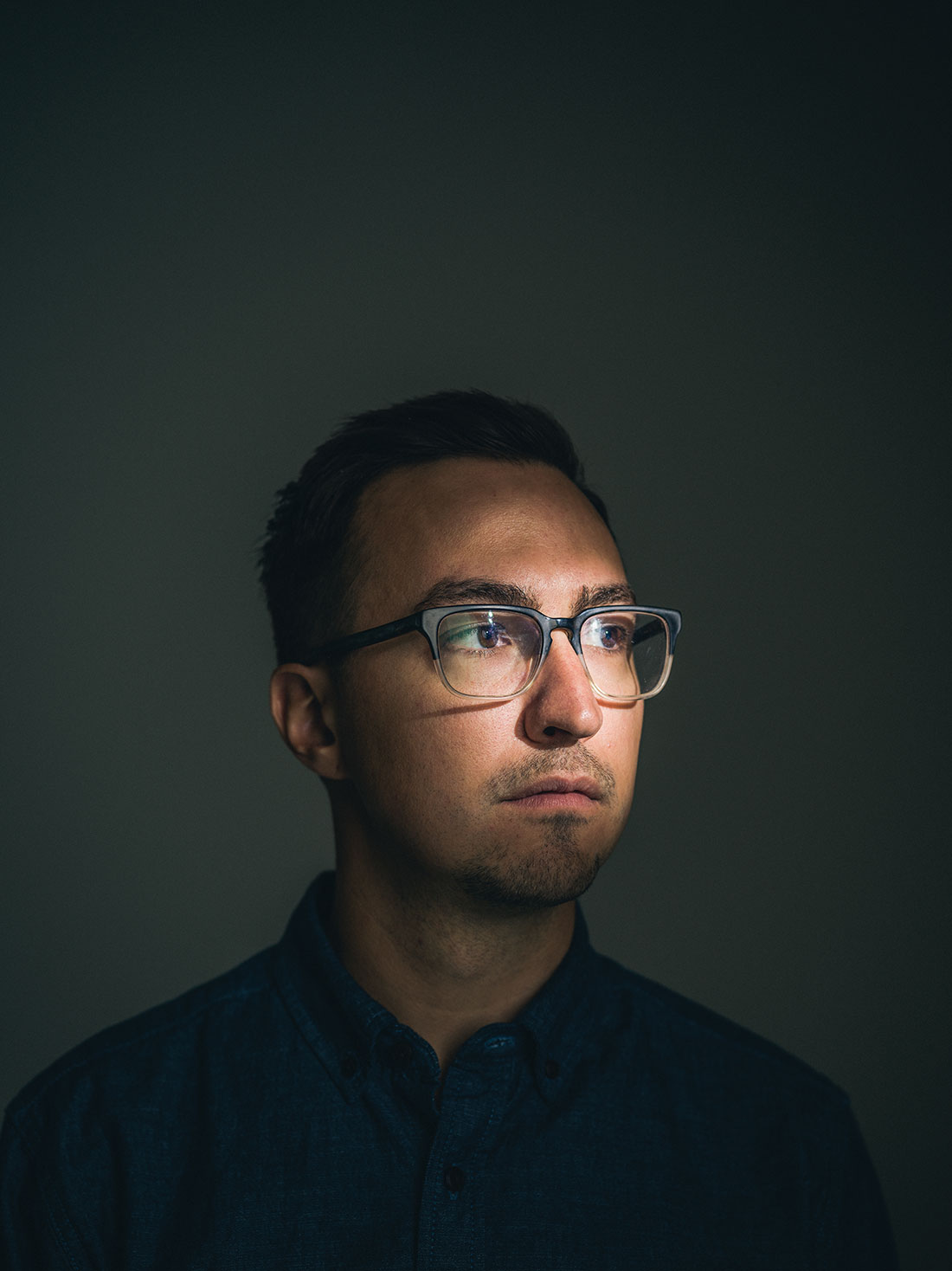
Capturing Truth
Westminster alum uses photography to tell an honest story
by Autumn Thatcher (MSC ’15)
A west Texas native, Michael Friberg (’09) picked up snowboarding during his high school years, when his family would vacation outside of the football-obsessed town he grew up in. When it was time to select a college, Michael made a list of schools based on their proximity to the mountains. Westminster College landed at the top of the list.
“Salt Lake City is ground zero for a lot of the snowboarding stuff,” Michael says.
Michael began his Westminster career as a political science major who scheduled his classes around snowboarding. He began photographing his friends on the slopes and eventually took a photo class for fun. His experience in the darkroom led to a newfound passion.
“It was an exciting time of my life,” Michael says. “I came from a part of the country where there wasn’t a lot of art being made. It was liberating being around other creative people and working on weird projects.”
Michael soon switched his major to photography, but his interest in politics remained. He looks back on his art history classes at Westminster as pivotal moments in his educational career and points to professor Hikmet Lowe as the source from which Michael realized that he did not need to abandon politics for art.
“I think I took three art history classes with Hikmet,” Michael explains. “The way she taught them was really engaging and more of a discussion of the overall trajectory of art. Those ended up being some of my favorite classes.”
Beyond the classroom, Michael began looking at work from famous photojournalists. He was interested in depicting real things in real ways. “At Westminster, I was getting fed a steady diet of art and the theory behind it, but I was also interested in real things. I had this weird convergence of influences that maybe I wouldn’t have had if I had gone to a traditional journalism school. I saw documentary photography as an inherently political thing. It helped me think of it in context too, not in a vacuum, but how it exists in culture,” he says.
As a professional photographer, Michael does more than simply take a photo. He captures a moment, whether it be photographing someone sitting still for a portrait or documenting the refugee crisis in Jordan. He is driven by the desire to tell a story— good or bad—with honesty. Michael says that, to some extent, the way in which he approaches his career was inspired by his time at Westminster. He credits adjunct professor Amanda Moore for introducing him to modern photography.
“She had the most contemporary taste when it came to photography. She knew what was going on in the art-photography world,” he says. “She would bring books in that I had never seen before. That blew my mind wide open to look at work that was being made today in a contemporary way.”
He describes the flexibility to shape his own educational experience as an opportunity that he would not have had if he had been in a photojournalism program. “There were a lot of people who wanted to shoot photos; then maybe they were going to go off and be art teachers,” he says. “But if you were motivated, you could make it into your own thing and get support while doing that.”
Michael’s “own thing” has evolved into advancing his experience in photojournalism and embarking on a journey to tell an honest story through photography. This pursuit has led him to document water issues facing the Colorado River, explore Mormon culture in Utah, and co-lead and curate the DISPATCHED project with photographer Ben Rasmussen. This project, in collaboration with the art and technology company VSCO, featured the work of six different photographers, each of whom worked on a specific project about the refugee crisis in the Middle East.
“We wanted to portray people from the Middle East in a more nuanced way,” Michael says. “There are tropes that get implied in journalism that allow us to feel pity but not compassion. There is a way that the other is historically visually represented. We wanted to apply some of our editorial practices to a documentary project. This project made some waves, but it’s ironic because it’s literally the purest form of journalism: it’s a formal portrait of somebody, and we ran an interview with it.”
Michael’s work has appeared in The New York Times, The New Yorker, Esquire, Wired, and many more publications. He has shot celebrity portraits at the Sundance Film Festival; and his 2013 photodocumentary project, By the Olive Trees, has been exhibited in galleries throughout the US. In 2013, he was named one of Photo District News’s PDN 30. Looking toward the future, Michael plans to take his creative talents to screenwriting and filmography because, despite all of his accomplishments, his story has only just begun.
About the Westminster Review
The Westminster Review is Westminster University’s bi-annual alumni magazine that is distributed to alumni and community members. Each issue aims to keep alumni updated on campus current events and highlights the accomplishments of current students, professors, and Westminster alum.
GET THE REVIEW IN PRINT STAY IN TOUCH SUBMIT YOUR STORY IDEA READ MORE WESTMINSTER STORIES
